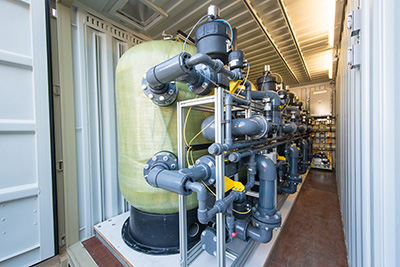
El suministro de agua subterránea cumple con la nueva norma propuesta para el cromo 6
 Hoy, después de que en la semana la Junta Estatal de Control de los Recursos Hídricos (Junta Estatal) publicara un proyecto en el que se propone un nivel máximo de contaminante (MCL) de 10 partes cada mil millones (ppb) para el cromo 6, Cal Water anunció que las fuentes de agua de sus áreas de servicio afectadas ya están siendo tratadas para cumplir con el nuevo parámetro recomendado. Cal Water installed treatment at impacted, active groundwater sources in its Dixon, Salinas, and Willows Districts when the original MCL was set in 2014; the utility has continued to treat the water since then.
Hoy, después de que en la semana la Junta Estatal de Control de los Recursos Hídricos (Junta Estatal) publicara un proyecto en el que se propone un nivel máximo de contaminante (MCL) de 10 partes cada mil millones (ppb) para el cromo 6, Cal Water anunció que las fuentes de agua de sus áreas de servicio afectadas ya están siendo tratadas para cumplir con el nuevo parámetro recomendado. Cal Water installed treatment at impacted, active groundwater sources in its Dixon, Salinas, and Willows Districts when the original MCL was set in 2014; the utility has continued to treat the water since then.
The current public comment period ends on April 29, 2022, after which the State Board plans to begin the formal rulemaking process later this year. The State Board vacated the original MCL-also set at 10 ppb-in 2017, after a court determined there was insufficient documentation on the economic feasibility of compliance.
"Protecting our customers' health and safety is our highest priority, and we have always been committed to meeting or surpassing all water quality regulations set by public health experts. That's why we developed, tested, and installed treatment at all of our affected, active sources quickly when the original MCL was set years ago," said Marty Kropelnicki, President and CEO. "Although there has been no MCL in effect for the last several years, because of chromium-6's risk to public health, we continued to treat for the contaminant, so our customers can rest assured knowing that their health and safety both continue to be protected."
Cal Water remains one of the only water utilities in the state that treats for chromium-6. The State Board has proposed the compliance schedule to be between two and four years for utilities that must still install treatment, based on water system size, with larger utilities required to comply with the final MCL sooner than smaller utilities.
Additionally, as part of its commitment to being a responsible environmental steward from beginning to end of the treatment process, Cal Water sends the chromium removed to be recycled for use by other industries.






